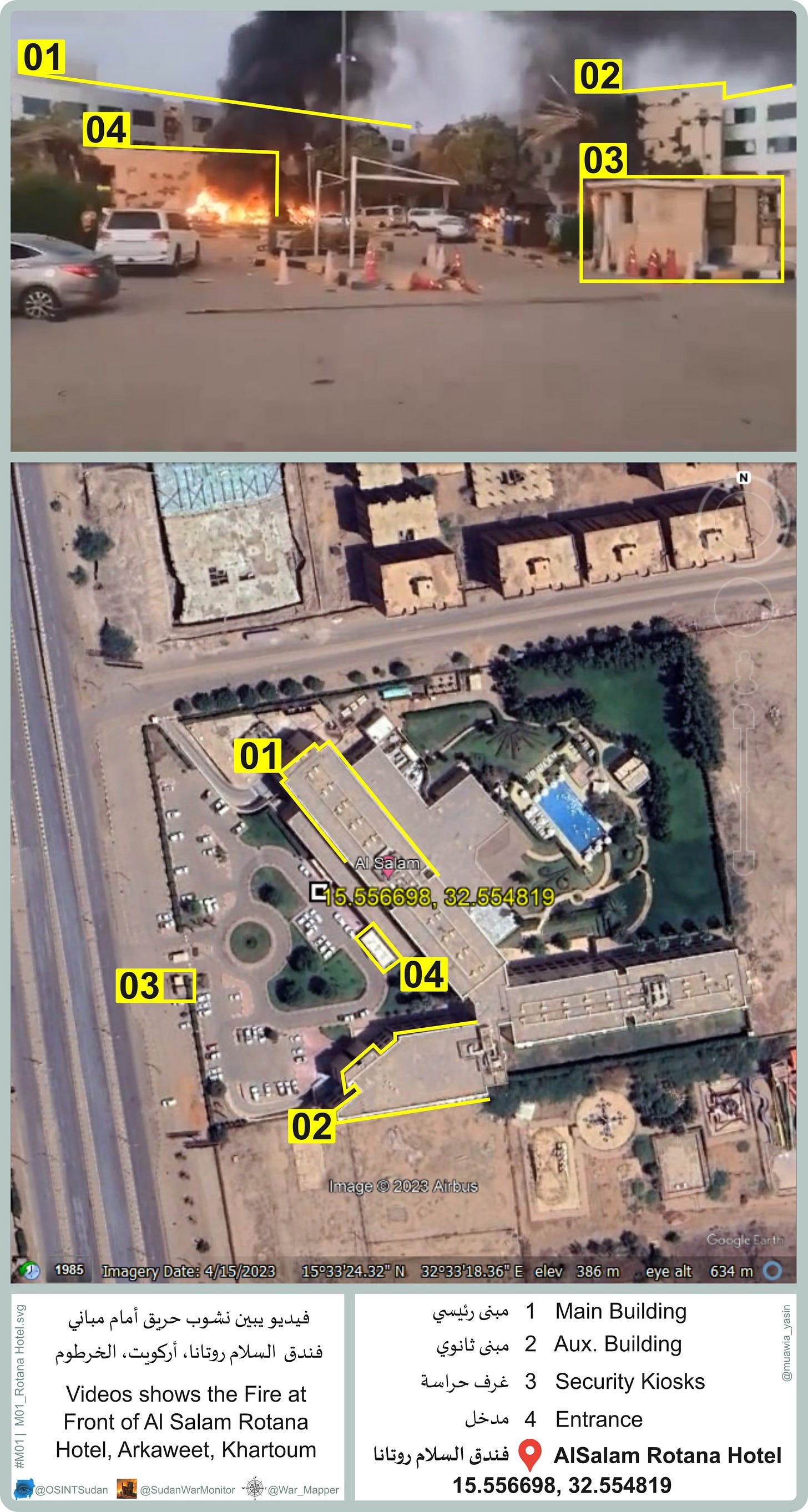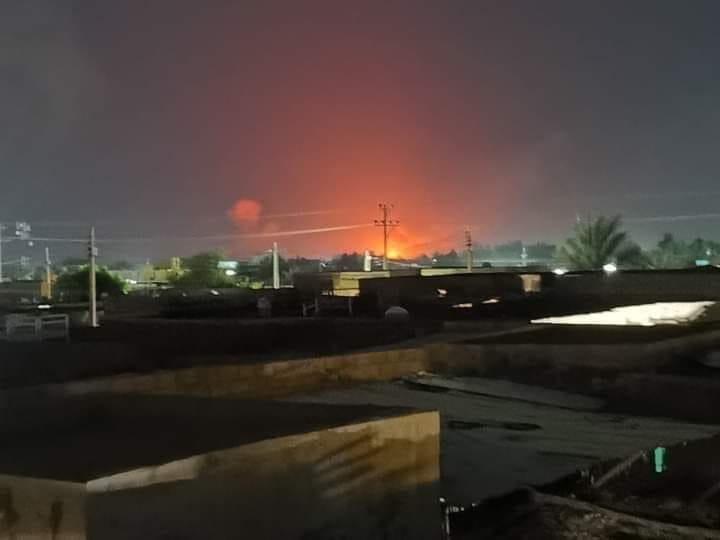Drone war intensifies
Khartoum witnesses more reports of drone attacks, some confirmed
Both sides in Sudan’s war are scrambling to get their hands on more drones, and drone attacks are increasing in frequency.
Neither side had stockpiled a significant number of drones before they war, and drone attacks were rare or nonexistent at the beginning of the conflict. Drones have been used principally for surveillance to direct mortar fire, artillery strikes, and airstrikes.
But as the conflict in Khartoum drags into a fourth month, armed drones are becoming increasingly important both tactically and psychologically. Both sides have adapted small or medium commercial drones, which they use to drop hand grenades or mortar shells.
Sudan’s army also reportedly has ordered some Turkish Bayraktar TB2 drones, which launch guided missiles, but we have not yet seen evidence of their use.
Video of a drone attack
This is a rare video from a Sudanese army source of a drone attack on Rapid Support Forces (RSF) fighters in Khartoum. The attack took place at the Wad Al Bashir Substation (15.6491614, 32.4610836), which is near the frontline in Omdurman.

The munition used in the above video is not clearly visible, but judging by the blast radius it was probably a hand grenade or small mortar shell.
In this second video, the fins of a mortar shell are clearly visible. This video was also filmed by a SAF drone, but the location is unknown.
Both of those videos were filmed more than a week ago. The precise date is unknown.
A more recent drone video, dating to July 20, shows RSF with a surveillance drone that they shot down:
Attack at Al Rotana Hotel
An attack this week at the Al Salam Rotana Hotel, a luxury hotel in central Khartoum, probably was the result of drone strikes, or an airstrike. Several cars caught fire at the hotel on the evening of Tuesday, July 18, and the hotel facade was damaged.
The hotel is south of the airport, which is controlled by the RSF. There are no SAF troops in that area. From this we can conclude that the sounds of gunfire heard in the video are either aircraft fire or ammunition exploding inside the burning cars.
This video shows the aftermath at the hotel the following day:
Civilians have also allegedly been the victims of drones. Emergency Lawyers stated that 13 civilians were killed and dozens injured when RSF conducted a drone attack a gathering of civilians in the Al-Azuzab area, south of the capital on Wednesday. The army also reported this, but we have not seen visual evidence of the attack.
In brief
It has been a few days since we provided detailed updates on the fighting in various parts of Sudan, so here is a list of recent developments. Clashes, bombings, and mortar attacks have occurred in numerous areas, so this list is not comprehensive.
On the evening of Thursday, July 20, clashes erupted between RSF and SAF for the first time in Al Fula, the capital of West Kordofan State, according to Beam Reports. West Kordofan, unlike neighboring East Darfur, is not fully under RSF control, and SAF maintain a significant presence in the state, despite its isolation from SAF-controlled territories elsewhere.
In another development in West Kordofan, an officer belonging to the SPLM-N (Malik Agar) forces in the state, who identified himself as Brig-Gen Mohamed Musa Hammad, announced his defection to the RSF.
Mortar shells landed Thursday, July 20, on Arkaweet blocks 61 and 63 and Al-Kalakala Al Qubba, according SAF’s official spokesperson. The spokesperson blamed RSF for the shelling adding, “then they sent a team to film and accuse the Armed Forces, and these attempts were repeated many times to deceive the public opinion, which has become disbelieving in their exposed lies.”
SAF also stated that they clashed with RSF “while combing Abu Saad to the old Al Shaqla station, killing 12 rebels, and the rest of them fled. Our forces set up a successful ambush for the rebels in the Jabra area, killing 6 rebels.”
On Wednesday, the army said it repelled an attack in the Al Asahra area and Al-Dabbasin Bridge in Abu Adam, southwestern Khartoum.
Unofficial RSF media claimed that they captured military equipment at an air defense camp in Hajar Al Asal, 70 km north of Al Jaili on the Khartoum-Shendi road. They shared videos of their forces with armored air defense vehicles in a desert area, but the videos have not been dated or geolocated.
Clashes broke out in Nyala, South Darfur. Traders report a major spike in the prices of millet and sorghum. One resident told Radio Dabanga, “Heavy random shooting continues day and night, while bandits are roaming the streets in their four-wheel drive vehicles and on their motorcycles. They regularly raid shops and homes, and rob the owners of their money and property. We have lost our income and do not know what to do anymore to get our daily food.”
The Ombada Resistance Committees on the evening of Thursday, July 20, reported explosions in western Ombada “as a result of artillery and aerial bombardment targeting RSF gatherings around Souq al Gosh and the Ombada Model Hospital.” They shared this photo:
Projectiles fell in different neighborhoods of Al Obeid, the capital of North Kordofan State, following clashes between the army and the RSF on Thursday morning. These photos were shared by a local news outlet:
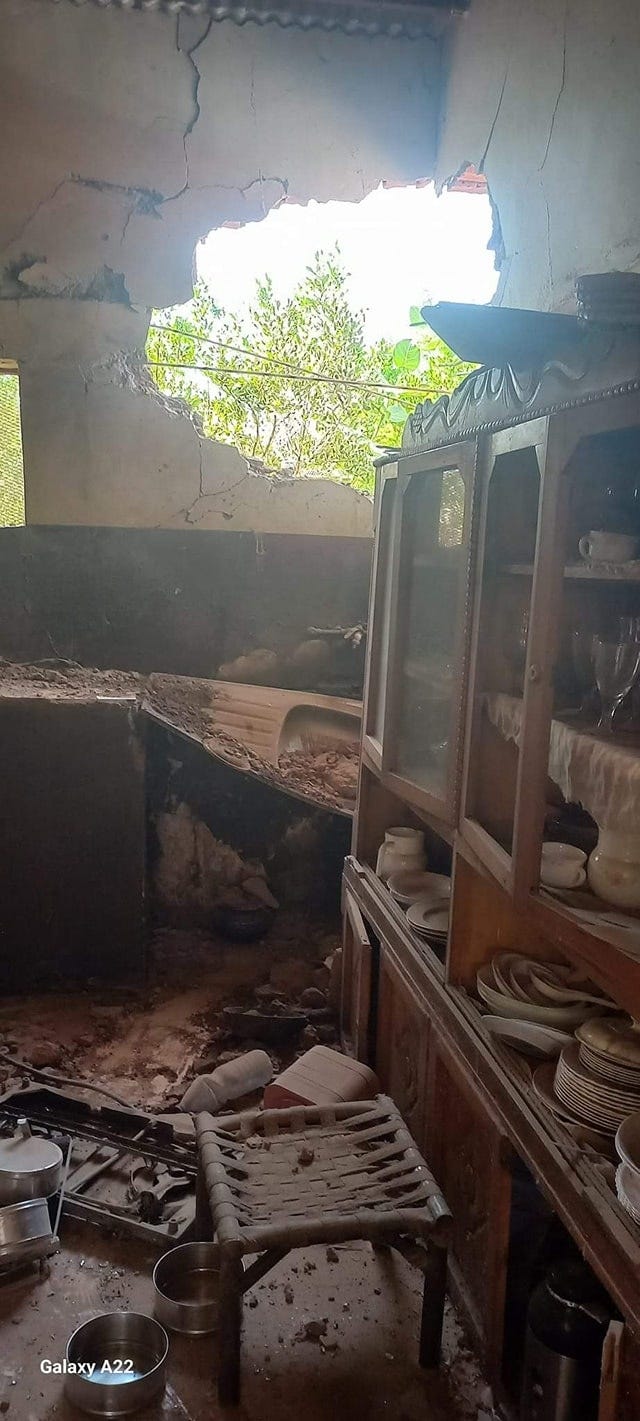
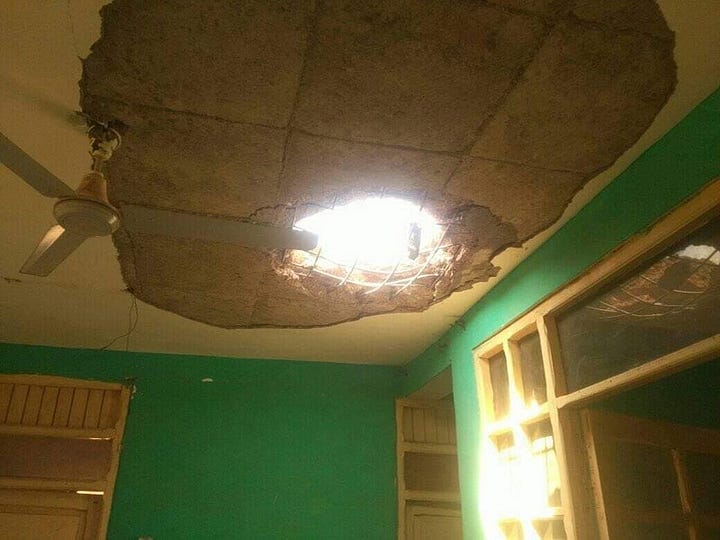
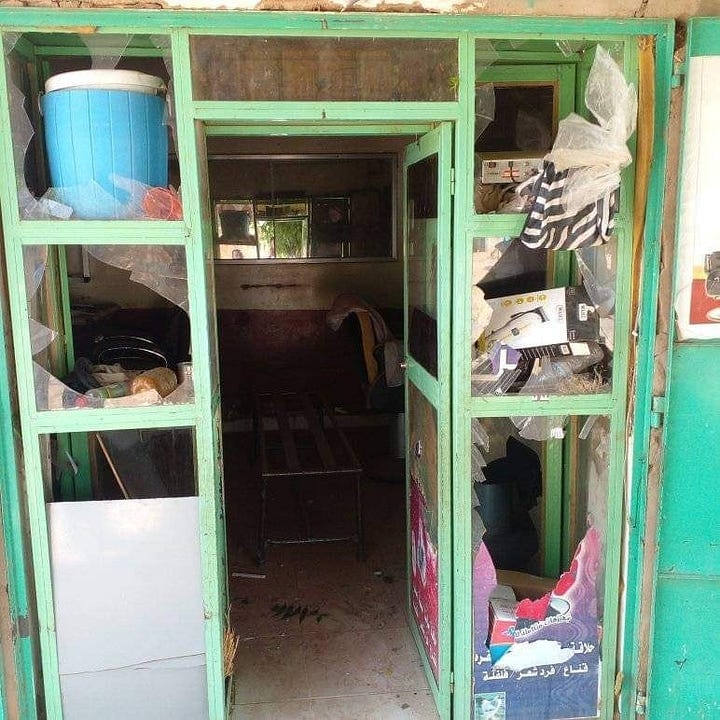

Warplanes were also seen over the city of Al Obeid. SAF’s spokesperson stated, “A number of hostile targets were dealt with around the city of Al-Obeid, where gatherings of the rebel militia were destroyed there.”
The army carried out an operation east of Jebel Aulia, patrolling villages in the area. This follows RSF raids in the region. The army said they sized a cache of weapons belonging to RSF, but did not report any clashes.
The army shelled RSF positions in Old Omdurman and several locations in Salha, south of Omdurman, witnesses told Sudan Tribune.
SAF bombed the Al Yasmeen Residential Project (15.475771, 32.658023, geolocation by Benjamin Strick). The area is just off Madani Street, a major north-south corridor in to Khartoum. The bombing targeted RSF fighters based in the neighborhood. There were no reported civilian casualties.
Channel 4 News prepared a report on the Misterei massacre, which was also the subject of a recent report by Human Rights Watch.
Mass recruitment and training by SAF continues in central and eastern Sudan.
About Sudan War Monitor
Sudan War Monitor (SWM) aims to fill a gap in the information space at the nexus between traditional journalism and the new technologies of open-source research, geolocation, mapping, and analysis of satellite imagery.
The purpose of the project is to give civilians a better understanding of conflict events and conflict dynamics in Sudan.
SWM does not aim to offer political solutions to the conflict or to take positions on what the post-conflict government should look like. Peace talks and political developments are only a secondary focus of the project.
SWM is a joint effort of Sudanese and international journalists, geolocators, social media monitors, and translators. To date, SWM is entirely a volunteer initiative.


